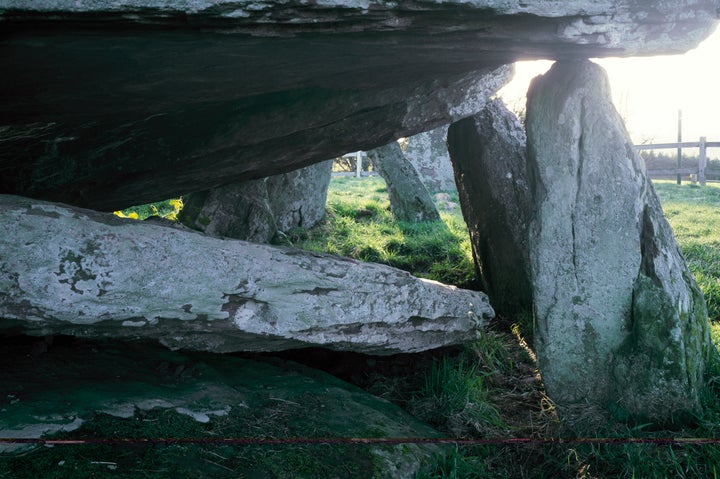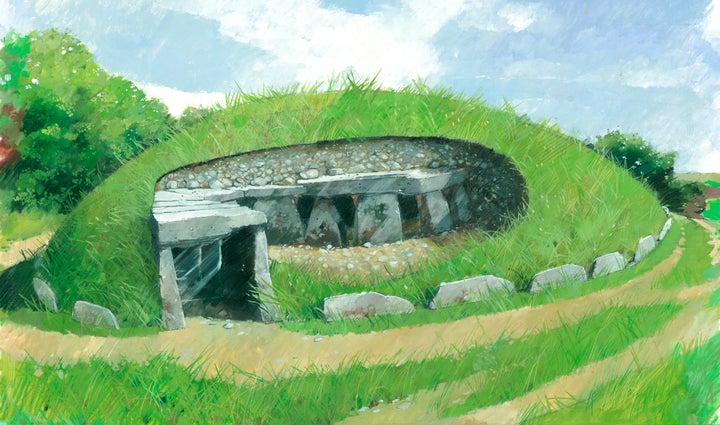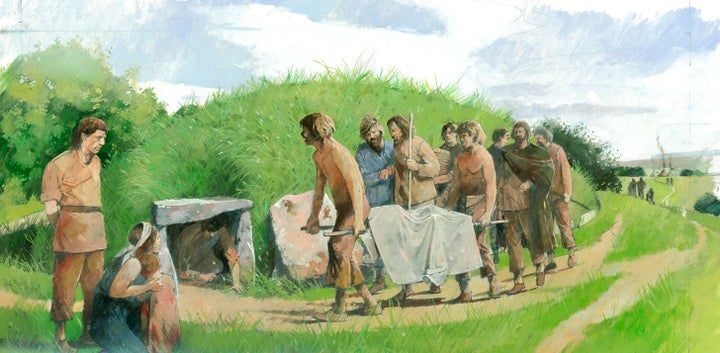
An ancient tomb in Herefordshire that’s older than the Great Pyramids is being excavated for the first time.
“Arthur’s Stone is one of this country’s outstanding prehistoric monuments, set in a breathtaking location ― yet it remains poorly understood,” Prof. Julian Thomas of Manchester University said in a news release. “Our work seeks to restore it to its rightful place in the story of Neolithic Britain.”
The tomb gets its name from supposed ties to the mythical ruler.
“Like many prehistoric monuments in western England and Wales, this tomb has been linked to King Arthur since before the 13th century,” English Heritage said on its website. “According to legend, it was here that Arthur slew a giant who left the impression of his elbows on one of the stones as he fell.”
The tomb is at least 3,500 years older than the legend of King Arthur, whose stories took place in the 5th and 6th centuries and were first mentioned centuries later. In more modern times, it was believed that the site served as the inspiration for the Stone Table in the C.S. Lewis book, The Lion, the Witch, and the Wardrobe.
The site is a Neolithic burial chamber, that from the outside appears as a set of stones with a large slab atop:

But many centuries ago, it was likely an inner chamber that was covered by an earthen mound. Artwork from English Heritage tried to capture what the site may have looked like centuries ago. A cutaway shows what it may have looked like inside the mound:

“The tomb has never been excavated, but similar examples in this region have been found to contain incomplete skeletal remains of several people, together with flint flakes, arrowheads and pottery,” English Heritage said on its website.
Another artwork depicts a burial at the site:

Archaeologists believe Arthur’s Stone was also a place where rituals for ancestors may have taken place.
Last year, excavations nearby challenged conventional wisdom about the site. It had been believed that the tomb had a right-angle passage within a wedge-shaped stone cairn. Instead, archaeologists discovered that Arthur’s Stone had long ago extended into what is now a nearby field, per Manchester University.
“They found that the tomb had first been a long mound composed of stacked turf, retained by a palisade of upright posts set in a narrow palisade surrounding the mound,” the university said in a news release. “However, when the posts rotted away and the mound had collapsed, an avenue of larger posts were added, leading toward the mound from the Golden Valley below.”
The new excavation at the site of the stone itself will continue through this month.
